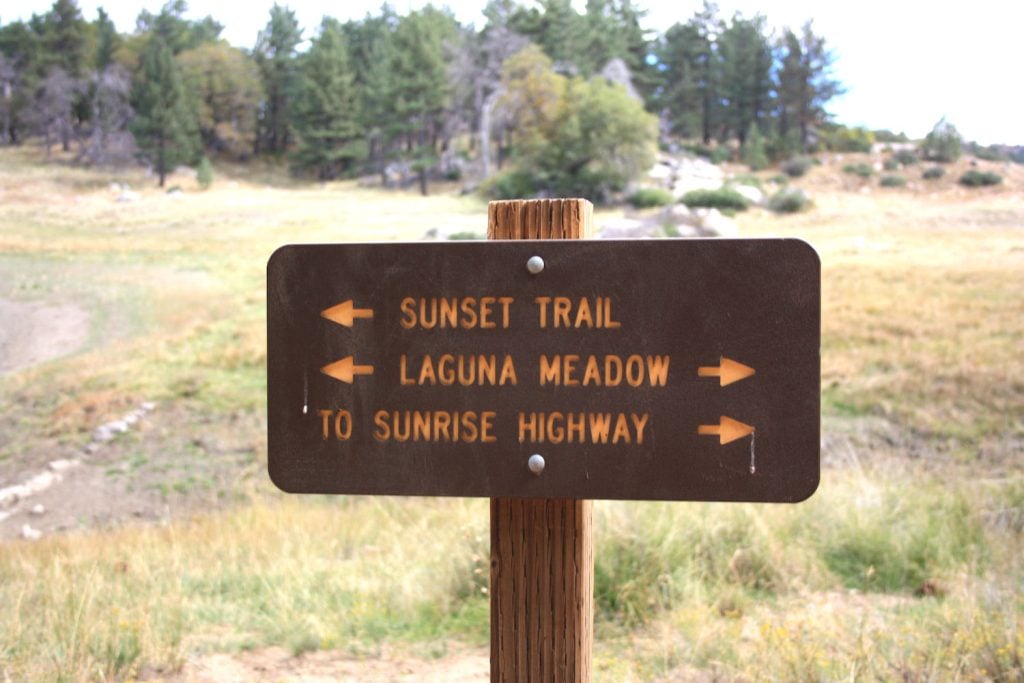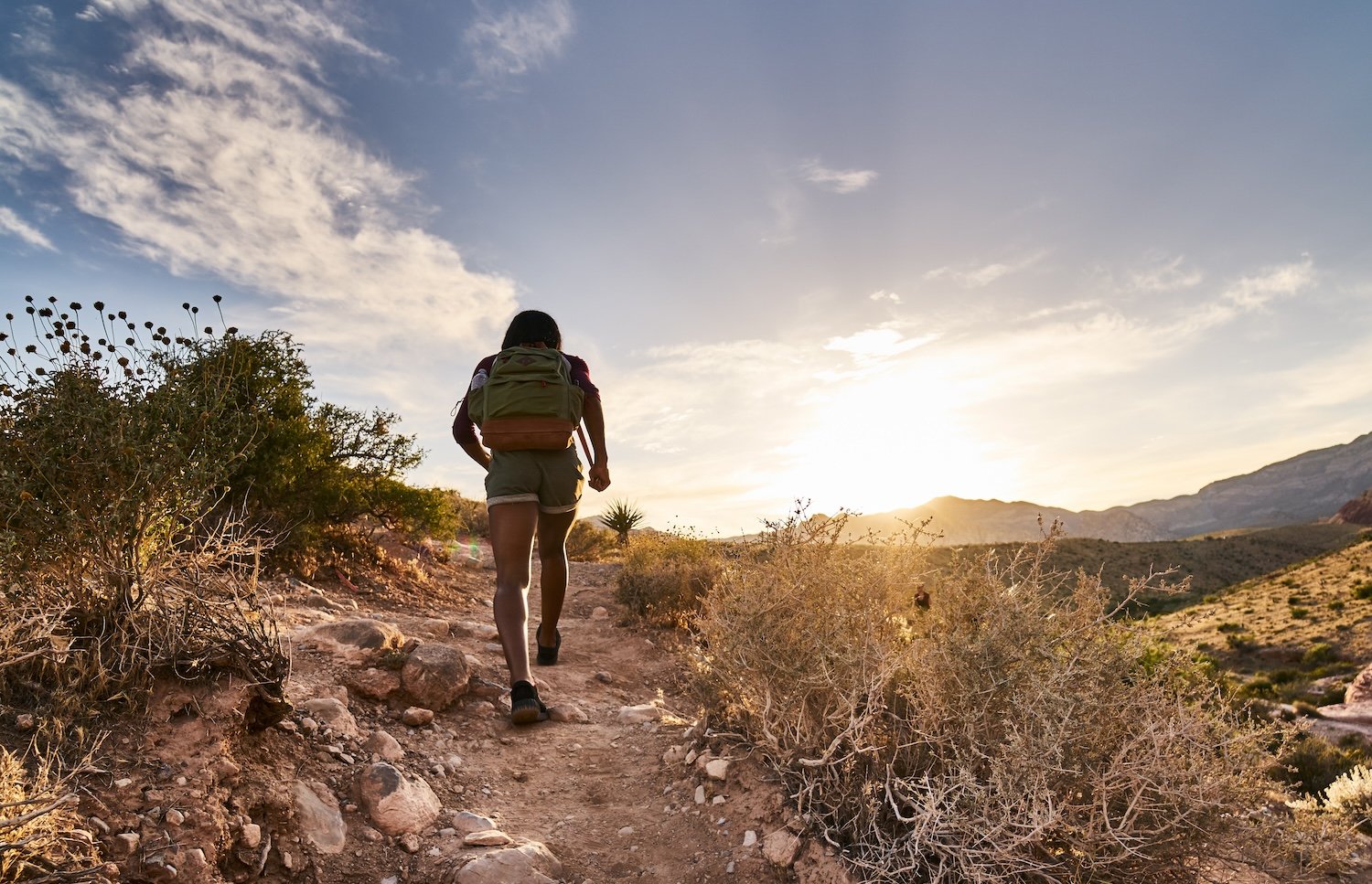The San Diego region has some challenging hikes, and one of the toughest is the 11-mile out-and-back trek to climb almost 3,600 feet to reach the top of El Cajon Mountain. The views all along the way are sensational, and the challenge of reaching the top is extremely rewarding. But it’s not a hike you should attempt without a fair amount of preparation.
Further outside the immediate San Diego County region there are other rewarding but difficult hikes. There’s the Cactus to Clouds Trail to climb San Jacinto Peak in Palm Springs, a 20.3-mile point-to-point hike (you can take the Palm Springs Aerial Tramway back down) with a 10,000-foot elevation gain.
Or the Rubicon Trail (10 miles) near Lake Tahoe, the Bridge to Nowhere hike (10 miles) in Azusa, and the Clouds Rest hike in Yosemite National Park (13 miles with 2,500 feet elevation gain).
I could go on. For all of these fantastic but challenging hikes, they require some training and a solid fitness base.
To help those looking to do some of these more challenging treks, we asked expert Gordon Janow, director of programs and founder of Alpine Ascents about the best workouts to get your body ready for these hikes.
“We guide technical peaks, mountaineering around the world, help people climb the highest mountain on each continent and run schools and summit climbs in the Cascades, Mount Baker, Mount Shuksan and Mount Rainier,” says Janow. “My background is as a Himalayan historian and logistics expert. I run the company and also work with people in terms of getting fit or training for mountaineering expeditions.”
None of the day trip 10-mile expeditions listed here compare to climbing Mount Rainier, but Janow says they do still take training. He laid out his best advice. Here are his fitness tips on the best workouts to help you get ready for hikes over 10 miles.

Mimic the Climb
The guiding principle to training for hikes is sports-specific training, or doing something that’s as close to the sport as you can to get ready for it as one of the elements, Janow says. He recommends three days in the gym of using a treadmill or step mill (like an escalator that helps you continuously climb stairs, not a stair climbing machine) and then a hike on the weekend to build up endurance.
Gym sessions should be around 45 minutes with an emphasis on increasing your speed. “One misconception people have is like, ‘Oh, I’m slow but I can go all day.’ But if you’re hiking for 11 hours, your body is still working for 11 hours. So you want to achieve a certain pace,” Janow says.
You don’t want what would normally be a six-hour hike to take 12 hours, because that’s too much wear on your body, he says. So before you go out, you can work on boosting your speed with interval training on the treadmill.
Interval Training on the Treadmill
The goal for hiking at a good pace is usually 1,000-vertical feet per hour, Janow says. His training plans ask you to vary your incline from 5 percent to 15 percent, and then he says you can do intervals to build your speed. This could mean walking two minutes at a slower pace, then one-minute at 3 mph, and repeat. That way, you can build your speed over time.
Train on a Step Mill
You can also use the same method to pick up your pace on a step mill, going faster for one minute and slower for two minutes until you build up speed.
“There’s benchmarks, like being able to ascend 1,000-vertical feet per hour with a certain pack weight,” Janow says. “Each trip has a different pack weight. So you would prepare differently depending on the trip that you’re going on.”
He also has training programs and more fitness tips on his website, like this one to prepare for specific hikes such as Mount Rainier.
Train Based on Whether You Can Talk
Try to climb at your anaerobic threshold, Janow says. “An easy way to determine [this threshold] is that if you can be next to somebody and kind of yell out a few words, but you can’t hold a conversation,” he says, then you’ll know you’re in the right spot. “But you also shouldn’t be entirely out of breath.”
“What we’re trying to do is to increase this anaerobic threshold. It’s not about going as hard as you can for certain periods of time,” he says. “I want your anaerobic threshold to be something that’s pretty close to an all-day pace where you’re walking and I can talk to you.”
Strength Training
In addition to cardio, one fitness tip to remember is weight lifting to build up your strength, says Janow. That includes squats and lunges to strengthen your legs and glutes, but don’t forget about your back and shoulders so that you can carry supplies.
“You’re going to be like, ‘My God, the backpack on my shoulders is killing me.’ Or, ‘My hips really hurt.’ Or, ‘My calves, my thighs…’” he says. “If it’s your thighs that are hurting, let’s say, then you start working weights there doing squats or box steps or things like that.”
Weekend Hikes
There’s no substitution for actual time on the trails, so Janow says whenever possible, get out and do some shorter hikes to build up your mileage. Do shorter climbs with the pack you’d carry on the longer trek and get used to the weight and pace.
PARTNER CONTENT
Some hikes to try in the San Diego region are Cowles Mountain (three-miles roundtrip), either of the Fortunas in Mission Trails (five- or six-miles roundtrip), Pyles Peak (six-miles roundtrip) and Iron Mountain (5.5-miles roundtrip).





